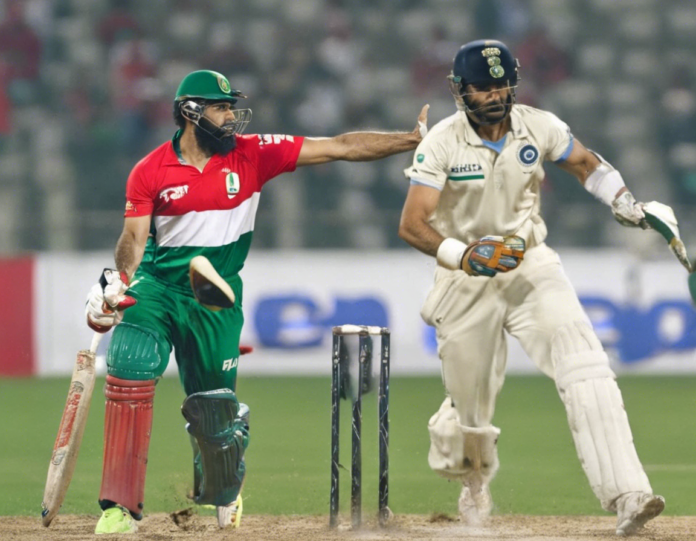Introduction
The world is a rich tapestry of vibrant cultures, each unique and beautiful in its own way. In this article, we will delve into the cultural contrasts between Lebanon and India, two countries that are poles apart in terms of their traditions, customs, and way of life.
Geography and Demographics
Lebanon is a small Middle Eastern country, while India is a vast South Asian nation. Lebanon is predominantly Arab, with a mix of ethnic groups including Armenians, Kurds, and Assyrians. On the other hand, India is a melting pot of cultures, with a diverse population comprising various ethnicities, languages, and religions.
Religion
Lebanon is known for its religious diversity, with Islam and Christianity being the two dominant religions. India, on the other hand, is home to multiple religions such as Hinduism, Islam, Christianity, Sikhism, Buddhism, and Jainism. The religious landscape of both countries influences their customs, festivals, and social norms.
Cuisine
Lebanese cuisine is characterized by its use of fresh herbs, spices, and olive oil. Some popular Lebanese dishes include hummus, falafel, tabbouleh, and kebabs. Indian cuisine, on the other hand, is a culinary extravaganza with a wide array of flavors and spices. From the spicy curries of the north to the vegetarian delicacies of the south, Indian food is a celebration of taste and variety.
Dress and Attire
Traditional Lebanese clothing is influenced by both Arab and Western styles. Men often wear the “thobe” or “dishdasha,” while women can be seen in elegant dresses with intricate embroidery. In India, traditional attire varies from region to region. Women may wear sarees, salwar kameez, or lehengas, while men opt for kurta pajamas or dhotis.
Language
Arabic is the official language of Lebanon, while Hindi and English are the official languages of India. In India, a multitude of languages are spoken across different states, with Hindi serving as a common language for communication.
Festivals and Celebrations
Lebanon celebrates a mix of religious and secular festivals, including Eid al-Fitr, Christmas, and Independence Day. In India, festivals hold great cultural significance, with celebrations such as Diwali, Holi, Eid, Christmas, and Durga Puja bringing people together in joy and merriment.
Social Norms and Etiquette
In Lebanon, hospitality is a cornerstone of social norms, with guests being treated with warmth and generosity. This is reflected in the Lebanese custom of serving guests coffee or tea. In India, respect for elders and guests is deeply ingrained in the culture, with traditional greetings such as “Namaste” symbolizing humility and respect.
Education and Work Culture
Lebanon has a high literacy rate and boasts a well-developed education system. In India, education is highly valued, with a focus on academic excellence and professional qualifications. The work culture in Lebanon is influenced by Arab and Western practices, while India’s work culture is a blend of traditional values and modernity.
Art and Architecture
Lebanon is renowned for its historic sites, such as the ancient city of Byblos and the Roman temples of Baalbek. Indian architecture showcases a rich blend of indigenous styles, with iconic structures like the Taj Mahal and the temples of Khajuraho mesmerizing visitors with their beauty and grandeur.
FAQs
- What are some traditional Lebanese dishes that I must try?
-
Some must-try Lebanese dishes include hummus, falafel, shawarma, tabbouleh, and baklava.
-
Which are the major religions practiced in India?
-
Hinduism, Islam, Christianity, Sikhism, Buddhism, and Jainism are among the major religions in India.
-
What is the significance of Diwali in Indian culture?
-
Diwali, also known as the Festival of Lights, symbolizes the victory of light over darkness and good over evil in Indian mythology.
-
How do people greet each other in Lebanon?
-
In Lebanon, people commonly greet each other by kissing on the cheeks (usually three times), as a sign of friendship and warmth.
-
What are some famous landmarks in India for architectural enthusiasts?
- Architectural enthusiasts must visit the Taj Mahal, Qutub Minar, Red Fort, and temples of Khajuraho in India.
Conclusion
While Lebanon and India may be worlds apart geographically, they share a common thread of rich cultural heritage and traditions. The contrasts between these two countries serve as a reminder of the beauty and diversity that exist in our world. Exploring and embracing different cultures not only broadens our horizons but also deepens our understanding and appreciation of the human experience.

